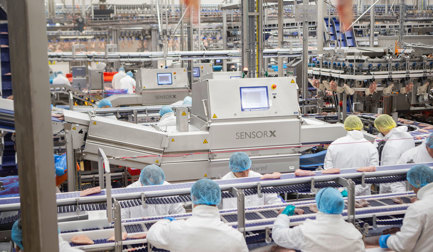SensorX automatically adapts the bone detection level according to the thickness of the specific product.
In the last twenty years, the main concern for processors has been to eliminate residual bones from deboned products. In response to this challenge, Marel introduced SensorX in 2007, the first system to reliably detect and reject bone-contaminated products. Since then, SensorX has been the standard for bone inspection in the poultry industry.
Accurate, consistent and efficient
Two factors account for SensorX’s continued success. First is Marel’s approach to bone inspection, which has been to detect and eliminate residual bones early in the process. Doing so prevents bones from spreading further downstream. Furthermore, the objective for SensorX has always been to detect and eliminate efficiently and consistently those critical or most hazardous bones. This has resulted in a system that is accurate, consistent, and efficient. Accurate in the sense that 99% of all products with well-calcified bone fragments (bigger than 2mm) are detected, and that no more than 3% of detections are inaccurate (false positive). A lower false positive rate ensures that no valuable labor is wasted looking for bones where there are none. Consistent as all products detected with residual bone are always ejected from the product flow, day in, day out. SensorX is efficient, requiring a minimal number of operators and providing optimal logistics for routing rejected and approved products to their respective destinations. Moreover, intelligent software ensures calibrations are conducted without disrupting production.





